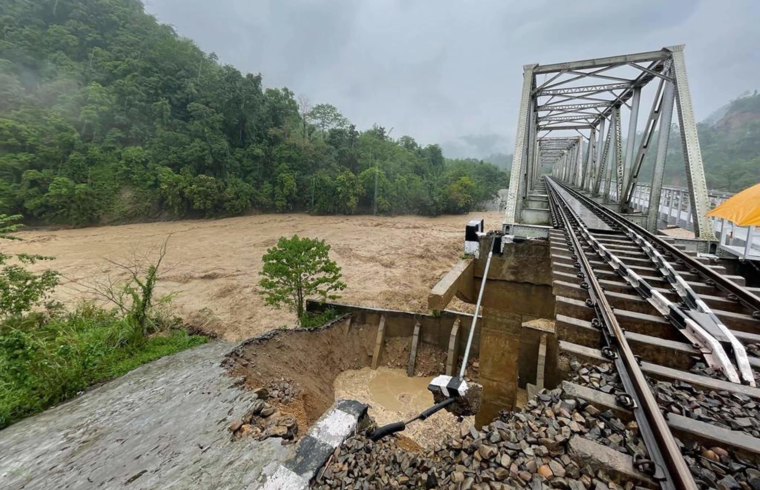Many scientists have also said that the menace of climate change is set to be perennial and worsen as searing winds blow across swathes of north India. Under its influence, National capital Delhi recorded temperatures above 49 degrees Celsius and Assam recorded flash floods.
Delhi neighbour Gurgaon also recorded 48 degrees Celsius, the highest since May 1966 on Sunday. Following this experts analysed the incidence of extreme weather events and sounded a dire warning.
“With increasing temperatures as a result of global warming in South Asia and the consequent exceeding levels of heat and humidity, it is predicted that we will have more intense, longer and frequent heat waves in India,” environmentalist and climate scientist Shakil Ahmad Romshoo told news agency PTI in a phone interview from Srinagar.
According to the University of Kashmir professor, one indicator of climate change is the increasing frequency of climate extremes. A heat wave, he said, is a climate extreme and a direct indicator of climate change.
Scenes of flash floods on the north east and severe heatwave in Delhi emerged all throughout the weekend.

View Full Image
“Over the last few decades, global warming has been on an accelerated pace and its marks can be seen in any single day of global weather since the 2000s. Generation Z has never lived a day without feeling the influence of global warming,” added Roxy Mathew Koll from the Indian Institute of Tropical Meteorology told PTI in Pune.
The national capital recorded its second hottest April this year since 1951 with a monthly average maximum temperature of 40.2 degrees Celsius. Other north Indian states, including the hill areas of Uttarakhand, Himachal Pradesh, Jammu and Kashmir and Ladakh, also recorded temperatures way above the normal level this season.

View Full Image
While north India battled high temperatures, parts of Kerala and Lakshadweep islands saw heavy rainfall on Sunday. Besides, the weather office sounded a red alert across five districts in Kerala. And in the east, Assam’s Dima Hasao district has been hit by flash floods and massive landslides at several places, snapping rail and road links.
According to Indian Meteorological Department (IMD) data, the average maximum temperature over northwest and central India for April this year has been the highest in 122 years.
A 4.5 to 6.4-degree departure from normal is considered to declare a heat wave and over 6.4-degree departure for a severe heat wave.
Regardless of local weather interactions, Koll explained to PTI in an interview, the root cause for increase in such events in the India-Pakistan region is global warming due to human-made carbon emissions.
The Earth’s average temperature has increased by 1.2 degrees Celsius above pre-industrial levels, said global climate change expert Harjeet Singh.
The Intergovernmental Panel on Climate Change (IPCC) Report released in 2021 warned that rising temperatures will lead to increased incidence of heat waves, longer warm seasons and shorter cold seasons, Singh, senior advisor, Climate Action Network-International (CAN-I), told PTI over phone.
Climate change effect on urban landscape
The impact of climate change is amplified in cities, since urban areas are usually warmer than their surroundings due to concentrated structures and less greenery.

View Full Image
In Romshoo’s view, heat waves, which are predicted to be more frequent, deadly and longer in the country, will affect every sector of the economy.
“Look at the severity of the heat wave this year, it is concentrated in both Indus and Ganges river basins which produce and supply much of the food supplies in Pakistan and India. Heat waves are also projected to enhance the melting of glaciers in the region which is already facing water scarcity.”

View Full Image
The scientists said if the frequency of heat waves continues as is predicted, these will adversely impact food, water and energy security in the region.
As the globe hurtles towards climate disaster, what is the way out?
Romshoo said the impact on cryosphere (snow and glaciers) and the predicted increase of hydro-meteorological disasters are worrisome.
“… these need to be addressed sector-wise through development of robust and judicious strategies and policies based on scientific inputs and guided by knowledge.”
Weather conditions in Delhi
People in Delhi woke up to a partly cloudy sky on Monday morning with the meteorological department forecasting a thunderstorm or dust storm in the national capital that could bring down the mercury by a few notches thereby providing temporary relief from the sweltering heat.
The MeT department said a cyclonic circulation over Punjab and Haryana will induce pre-monsoon activity that will provide some relief from the intense heat on Monday and Tuesday.
The IMD said a thunderstorm or a dust storm is likely in the national capital on Monday.
The minimum temperature on Monday morning was recorded at 30.8 degrees Celsius, four notches above normal. The relative humidity was at 22 per cent.
The maximum temperature is likely to settle around 41 degrees Celsius.
Flash floods in Assam
Around 57,000 people across seven districts of Assam have been affected by the current spell of flood in the northeastern state, according to an official statement.

View Full Image
The data also shows that nearly 222 villages under 15 revenue circles are affected in this wave of flood and around 10321.44 hectares of cultivated land has submerged under flood waters. Three people including a child died during this natural calamity in Assam.
Apart from human beings, the flood has also affected 1,434 animals and a total of 202 houses have been damaged so far.












